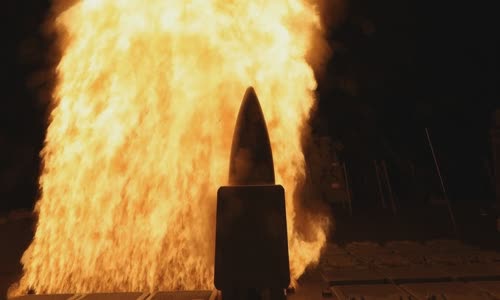The first intercontinental missile interception by US warships could be a response to China's "carrier killer" missile test in the South China Sea.
The US Missile Defense Agency (MDA) said on November 17 that the destroyer USS John Finn launched an SM-3 Block IIA anti-aircraft projectile and hit a simulated intercontinental ballistic missile (ICBM).

The SM-3 missile leaves its launch pad on the USS John Finn on November 16 Photo: US Navy
"The SM-3 Block IIA bullet test can be seen as a response to Beijing launching two ballistic missiles nicknamed 'carrier killer' into the South China Sea in August," said military expert Zhou.
This is a modal window.
Beginning of dialog window.
End of dialog window.
China on the morning of August 26 launched a DF-26B missile from the northwestern Qinghai province and a DF-21D missile from the eastern Zhejiang province of the country.
Wang Xiangsui, a former Chinese army colonel and now professor at Beijing Aerospace University, later revealed that both bullets hit a moving target in the South China Sea.
The U.S. air defense missile test could also send a warning message to North Korea, which has a nuclear and ballistic missile program that worries the United States.
Experts believe that the US SM-3 missile test could become the reason for China to launch more ballistic missile launches this year.
"Washington took advantage of Beijing's missile tests to increase its military presence in the Pacific, while the SM-3 interceptor projectile aimed to show that it had total dominance in Asia.
The SM-3 Block IIA missile test marks the first time a US warship has launched a projectile to intercept an ICBM simulated target on the journey.
Military expert Song Average in Hong Kong said that the 0SM-3 Block IIA missile launched from US warships is not enough to intercept Chinese DF-26B and DF-41 missiles because they are capable of changing lightning trajectories.
"The SM-3 has difficulty dealing with the DF-41, but remains a threat to North Korean and Iranian ICBM models. However, the US test launch will prompt China to step up its modernization efforts.
SM-3 Block IIA is jointly developed by the US and Japan to intercept medium and long-range ballistic missiles.
SM-3 is an atmospheric interceptor missile that is responsible for destroying enemy ballistic missiles in the mid-phase, when the target is flying in space.
When reaching the right height, SM-3 Block IIA launches a kinetic warhead to lower the target with impact force, instead of relying on explosive power like conventional interceptor missiles.
The SM-3 Block IIA was originally designed to fill the gap between the last-phase missile defense complexes like the Patriot and the THAAD.
However, the Pentagon aims to expand the SM-3 Block IIA's ICBM interception capabilities.



 Holly Brown
Holly Brown







